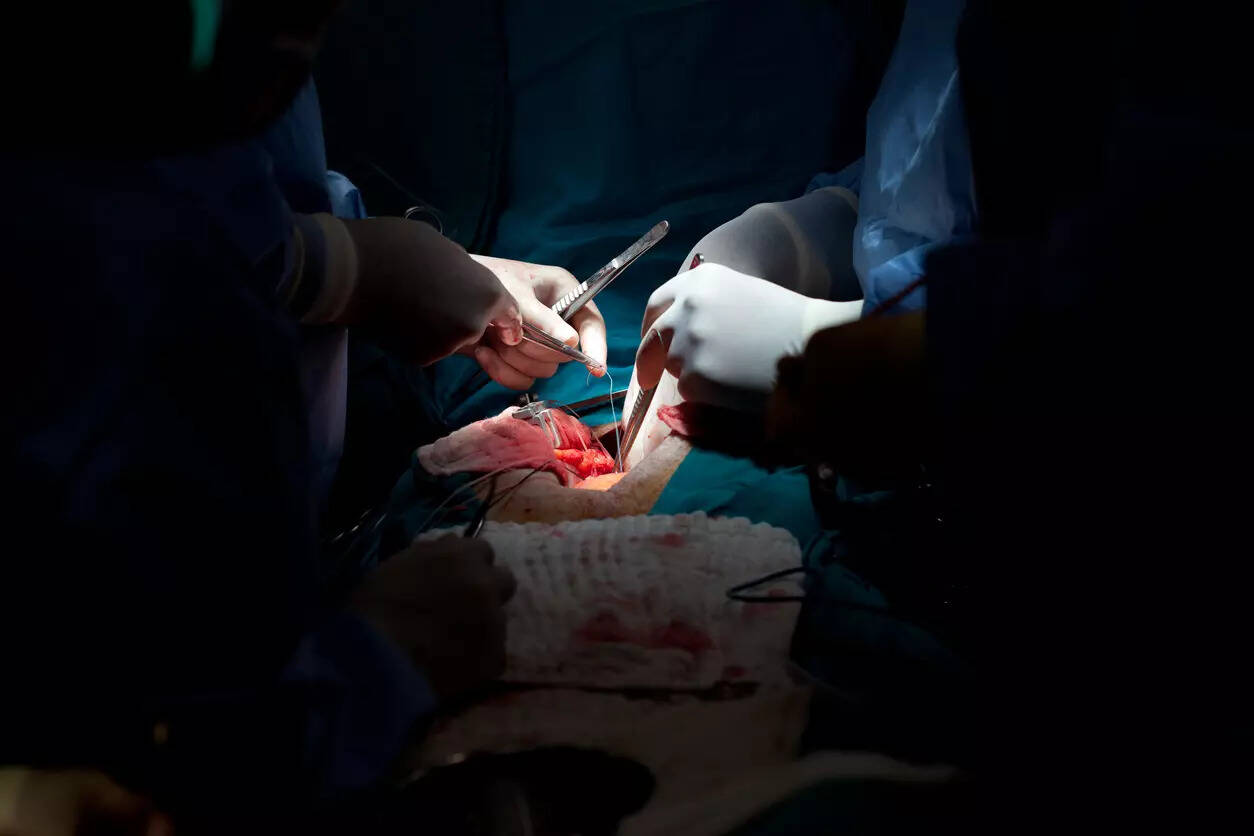
New Delhi: For many in India, heart valve replacement is seen as a daunting proposition—evoking images of invasive surgery, mechanical implants, lifelong blood thinners, and being tethered to medical oversight for life. But Dr Varun Shetty, Consultant – Cardiac Surgery at Narayana Health City, is advocating for an alternative that’s redefining this narrative—especially for younger patients: the Ross procedure.
In simple terms, the Ross procedure replaces a diseased aortic valve with the patient’s own pulmonary valve. The pulmonary valve, in turn, is replaced with a donor valve. While it may sound complex, this approach is gaining momentum for the quality of life it offers—particularly for children, teens, and young adults. Dr Donald Ross, the South African-born British cardiac surgeon who first performed it in 1967. He pioneered this innovative technique as a way to offer young patients a more durable and natural valve replacement without the need for lifelong blood thinners.
“The biggest advantage is that you’re using the patient’s native valve,” says Dr. Shetty. “It grows with the body, which is crucial for children and young adults. And unlike mechanical valves, there’s no need for lifelong blood thinners.”
The Ross procedure has been around since the late 1960s and has been practiced in India for over two decades, but adoption remains limited.
“It’s partly due to the technical challenges,” he explains. “It requires specialised expertise, but in experienced hands, the outcomes are comparable to traditional aortic valve replacements.”
Narayana Health has performed over 250 Ross procedures, and Dr Shetty recently published a 20-year follow-up study showing that 92 percent of patients required no further intervention.
“Some haven’t seen a doctor in a decade because they’re living completely normal, active lives.”
Dr Shetty also further elucidates that the procedure is largely due to its technical complexity—it involves replacing both the aortic and pulmonary valves in a single surgery, making it more demanding than standard valve replacements. Points out that outcomes are highly dependent on surgical expertise. Additionally, the procedure requires a high-quality donor valve (homograft) for the pulmonary position, which may not be readily available in many settings.
In India, where Transcatheter Aortic Valve Replacement (TAVR) is gaining traction—especially with the market expected to grow at a CAGR of 24 percent till 2033—Dr. Shetty says it’s not a one-size-fits-all solution.
“TAVR is ideal for elderly patients or those unfit for open-heart surgery,” he clarifies. “But in young patients, that valve will likely wear out within 10–15 years, necessitating complex re-operations. The Ross procedure, by contrast, offers longevity and freedom from medication.”
Mechanical valves, though durable, come with trade-offs.
“Lifelong anticoagulation increases the risk of bleeding, clotting, and complications with even minor injuries,” he says. “Tissue valves avoid that but degenerate over time.”
In contrast, patients who undergo the Ross procedure often don’t consider themselves heart patients at all.
“That’s the beauty of it—freedom and normalcy,” says Dr. Shetty.
The Ideal Candidate: Often Undiagnosed
India’s young population (average age approximately 29) often goes undiagnosed until late. One common condition is bicuspid aortic valve—a congenital issue affecting 1 in 200–500 people. It’s often discovered only when a doctor hears a murmur (an abnormal sound or extra beat heard when listening to the heart or large blood vessels), or when the patient experiences unexplained fatigue, shortness of breath, or fainting.
“If a murmur is detected during a routine checkup, get an echocardiogram done,” urges Dr. Shetty. “Early detection allows us to offer these life-transforming surgeries before permanent damage sets in.”
Does It Really Involve Double the Risk?
The Ross is technically complex—after all, it involves two valve replacements. But the risk isn’t doubled.
“In centers like ours, the outcomes match those of traditional surgeries,” Dr. Shetty says. “And we’re very selective. We only offer it when the heart’s structure supports it.”
A common concern is homograft degeneration (failure of the donor valve). But here too, data offers reassurance: only eight percent of patients needed follow-up interventions after 15–20 years.
To prevent issues like autograft dilation—particularly in patients with aortic regurgitation—surgeons now use techniques like Dacron reinforcement.
“We place the pulmonary autograft inside a synthetic tube or support the annulus with a ring. These help maintain structure and improve durability,” Dr. Shetty explains.
What Does It Take to Perform the Ross Procedure?
Dr. Shetty highlights “The procedure typically takes 4–5 hours—longer than standard valve replacements. But Ross procedure outcomes are excellent.”
He adds that in India, several proficient surgeons—often with a pediatric cardiac surgery background—perform the Ross. While it can technically be done even in infants, the risks are significantly higher.
“We usually perform it for children aged 5–10 or teenagers. But we’ve done it successfully in adults over 50 too.”
With India facing a high burden of valvular heart disease—largely due to rheumatic heart disease—Dr. Shetty believes expanding awareness is key.
“This isn’t just about surgery. It’s about helping young people live full, normal lives,” he says. “We need to educate both patients and physicians. The Ross procedure is a game-changer, and it deserves its place on the table when discussing treatment options for young patients with isolated aortic valve disease.”
For a more detailed conversation, watch the video interview :https://health.economictimes.indiatimes.com/videos/the-ross-procedure-indias-heart-valve-health-reimagined/120401213

